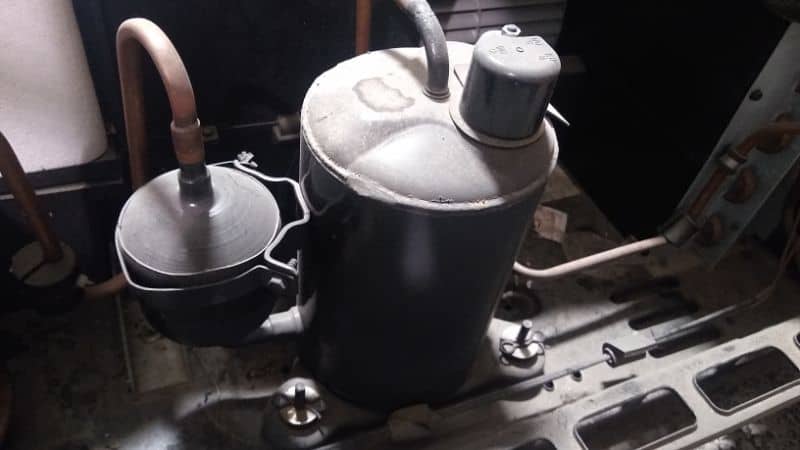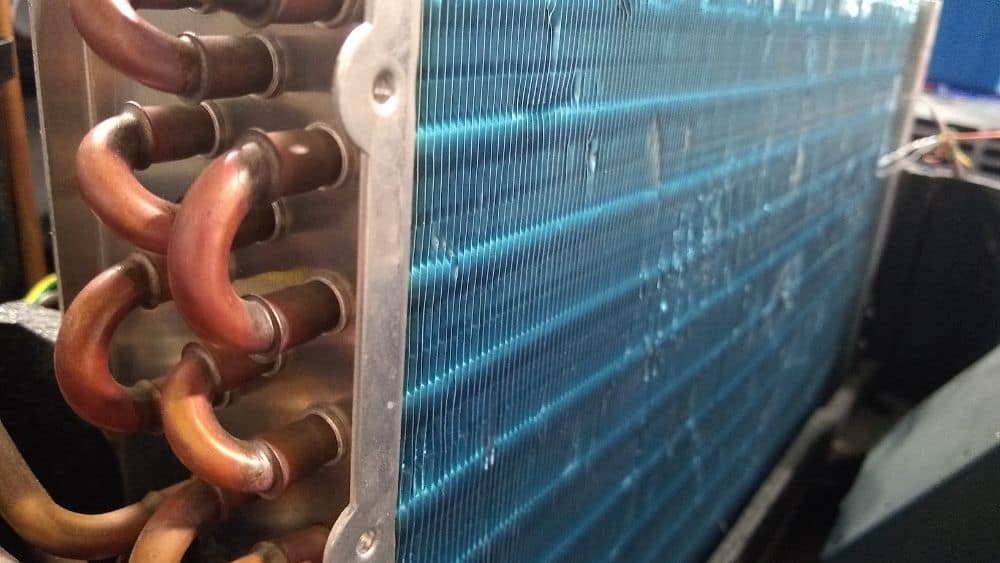There is a LOT of false advice going around about recharging your RV air conditioner. When I typed the search phrase “Can I recharge my RV air conditioner?” into Google, 8 of the first 10 results told me that yes, I could recharge my RV rooftop air conditioner, and it was easy to do!
I suspect most of this content is brainlessly concocted by AI. Here’s my “favorite” tidbit of advice: (Don’t follow it!).
“If your RV’s air conditioner needs recharging you’ll need to determine the type of refrigerant it needs first,” says the article. “Before you start working remember to turn off the power, then open up the unit and pour in the refrigerant.” My friends, if you can “pour” refrigerant into the system, you must be in Antarctica, because this stuff boils at -55 degrees Fahrenheit!
Anyways, all that advice is patently false. Erroneous. Perfidious. Choose whichever synonym strikes your chord. Modern RV rooftop air conditioners are not designed to be recharged. Nor are most basement air conditioners. And unfortunately, attempting to recharge a sealed system wastes money more often than it fixes the root cause.

Do All RV Air Conditioners Use Freon?
Let’s get another common misconception out of the way, too. Not all RV air conditioners use “Freon.” Freon is a brand name eponym (like Kleenex or Bandaid), once commonly applied to R-12 and more recently to R-22 refrigerants. These HCFC refrigerants have been mostly banned because they are nasty hydrochlorofluorocarbons that shoot the ozone layer full of holes. So older air conditioners may still use R-22, but newer air conditioners use R-410A.
But Somebody Told Me I Had Low Refrigerant!
RV rooftop air conditioners are hermetically sealed systems. Once the OEM pressurizes the system with refrigerant (usually 12-24 oz depending on the model), they pinch and sweat the copper intake tubing shut. There is no high-pressure port or low-pressure port. It’s sealed, like an Egyptian mummy.
Nine times out of 10, when someone suggests via an online forum that “you have low refrigerant,” they are wrong. The only possible cause of low refrigerant is a leak in the system. You can usually spot a leak from the oily residue the refrigerant leaves behind after it evaporates. Some refrigerants include colored leak detector dyes which may show up as a greenish or yellowish residue.
So before you jump to the conclusion that the unit is “low on Freon,” you should check other common causes like bad capacitors, loose connections, dirty coils, and airflow restrictions. If – and only if – the system is actually low on refrigerant, you must make a choice. Either replace the unit, or MacGyver a recharge.
Why Don’t RV Air Conditioners Have Service Ports?
There are several legitimate reasons why RV air conditioners are not equipped with recharge ports.
- They are quickly churned off an assembly line, and service ports cost money.
- These are small systems with a critical refrigerant charge. It’s extremely easy to under- or overcharge them.
- Refrigerants should NOT be released into the atmosphere. It’s an environmental disaster. And what would stop some ultracheap DIYer from just refilling their refrigerant every 3 months and allowing a small leak to persist?
- It’s tempting for someone afflicted by the Dunning–Kruger effect to pump the system full of extra refrigerant in the mistaken belief that if a little is good, more must be better! (This happens with E-Z Lube torsion axles and bearing grease all the time!)
So the official word is you cannot recharge an RV rooftop air conditioner. You must replace the whole kit and caboodle. This is where your MacGyver instinct may kick in. Who wants to pay $1,200 for a pinhole leak, right?

Can I Recharge an RV Air Conditioner On My Own?
Here’s the unfortunate truth: Repairing a refrigerant leak in your RV air conditioner is a crapshoot. Some people have hired HVAC technicians to solder or tap service ports into the system. Sometimes it works. Sometimes it doesn’t. Self-piercing taps are known to leak; soldering valves onto thin-wall copper tubing often creates stress cracking.
This is NOT something you can do yourself (nor is it legal in many states). You have to cut and solder copper pipe, properly purge and pressurize the system, recover and dispose of the old refrigerant, measure the delta T and final system pressures (accounting for compressor specifications, ambient and interior temperatures) – oh, and you have to find and seal the original crack or leak!
Are you an HVAC technician who can properly account for all these variables? No? (Me neither). Then for Pete’s sake, don’t try to recharge an air conditioner system yourself! They operate at dangerously high pressures. They are not forgiving. In my background research for this article, I read or watched a few “tutorials” on recharging your RV air conditioner, and unfortunately, many of the comments I saw were from people who did not understand the system fundamentals and were simply seeking cheap fixes. (Refer to Reason No. 4. why these systems don’t have service ports.)
I’m not trying to be condescending, and I’m definitely not anti-DIY. I don’t know how to properly install a service valve either! (If it makes you feel better, many HVAC technicians have tried and failed, too.) Unfortunately, these hermetically sealed systems just aren’t designed to be charged if they leak.
To recap, you have two options: Either pay an HVAC technician to fix the original leak and solder service valves into the system (voiding any existing warranty), and then cross your fingers that the MacGyvered fix works long-term, or bite the bullet and buy a new air conditioner (and enjoy the new warranty).
My recommendation is usually Number 2. Paying for a new conditioner isn’t fun, I know, but paying for a Hail Mary fix and then paying for a new air conditioner is even less fun.
Leave a Reply